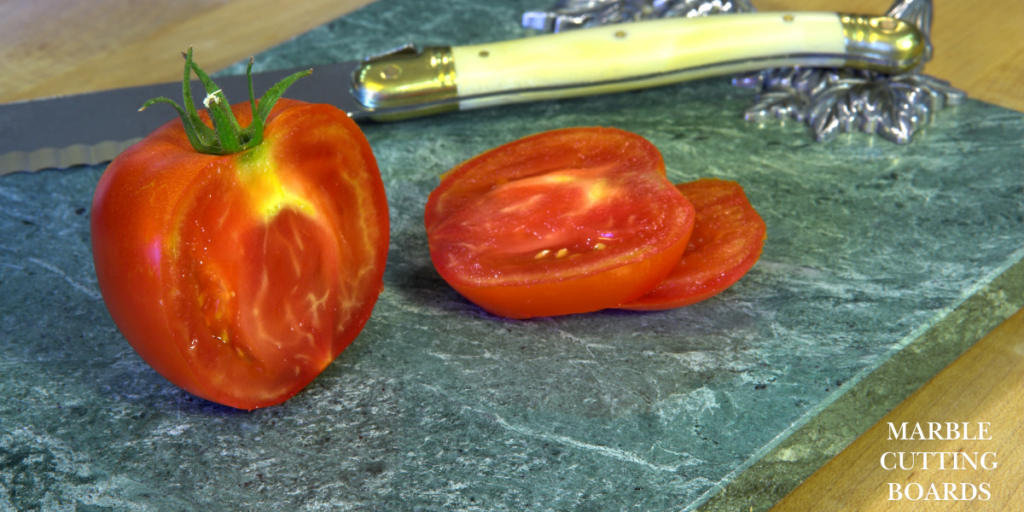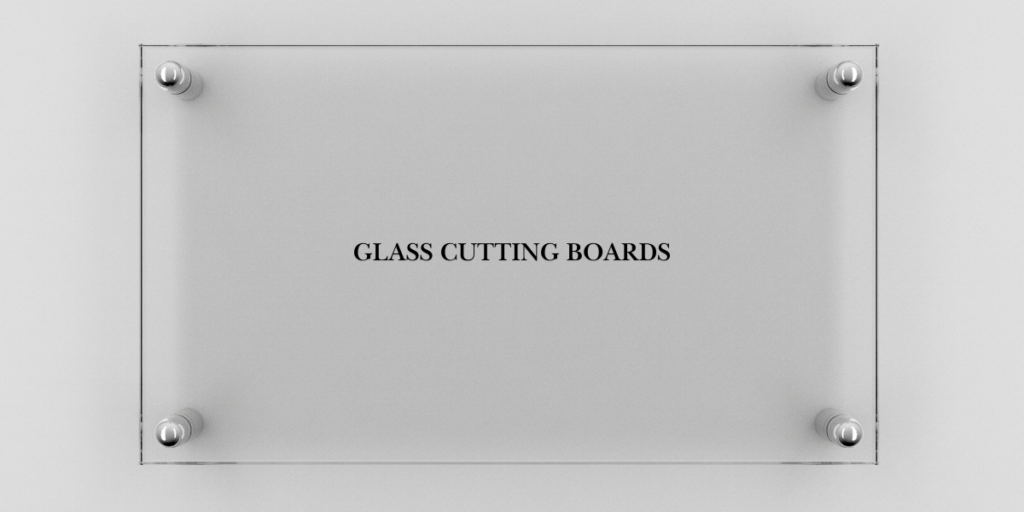Cutting Board Designs: Exploring Materials, Shapes, and Functions
Cutting boards are more than just kitchen tools—they are essential elements of modern kitchen design and functionality. As the culinary world continues to evolve, cutting boards are no longer restricted to simple slabs of wood or plastic. Today, they reflect style, personality, and innovation, offering an array of materials, shapes, and colors that cater to both practical needs and aesthetic preferences. In this post, we’ll dive deep into the latest cutting board designs and answer key questions like the purpose, characteristics, and various uses of different cutting boards.
The Purpose and Definition of a Cutting Board
What is the Definition of a Cutting Board?
A cutting board is a flat surface, typically made from wood, plastic, glass, or marble, used for food preparation. Its primary function is to provide a stable surface for cutting, chopping, slicing, and dicing ingredients. Cutting boards serve as a barrier between sharp utensils and kitchen countertops, preventing damage to surfaces and keeping food sanitary.
What is the Purpose of a Cutting Board?
The main purpose of a cutting board is to protect both the kitchen surface and the knives. When slicing fruits, vegetables, meats, or bread, the cutting board ensures that the countertop remains scratch-free and the knife blades stay sharp. Cutting boards also help maintain cleanliness and food hygiene by offering a dedicated surface that can be cleaned and sanitized after each use, reducing the risk of cross-contamination between different ingredients.
In addition to their functional use, cutting boards today are often selected for their decorative appeal, adding to the overall aesthetic of the kitchen. They may also be used as serving trays for charcuterie, bread, or even as part of food presentations.
Characteristics of Cutting Boards

What Are the Characteristics of a Cutting Board?
Several important characteristics define a good cutting board, and these characteristics vary depending on the material and design.
- Durability: A high-quality cutting board should be able to withstand frequent use without warping or cracking. Wood and plastic boards tend to be more durable than glass or marble, which are prone to chipping.
- Knife-Friendliness: The best cutting boards are gentle on knife blades. Hard materials, such as glass or marble, can dull knives over time, whereas softer materials like wood and plastic are more forgiving on the blades.
- Non-Slip Surface: Stability is key when using a cutting board. Some boards are designed with rubberized grips or silicone feet to prevent sliding during food preparation.
- Easy Maintenance: The ease of cleaning is another important characteristic. Plastic and glass cutting boards are typically dishwasher-safe, while wooden boards require special care, including hand washing and regular oiling to maintain their quality.
- Antimicrobial Properties: Some materials, like bamboo and certain treated woods, naturally resist bacterial growth, making them more hygienic for food preparation.
- Aesthetic Appeal: For modern kitchens, the cutting board’s design is just as important as its functionality. Boards made from high-quality wood like walnut or maple, or from luxurious marble, serve as stylish accessories in the kitchen.
Trending Materials for Cutting Boards
What Are Each Cutting Board Used For?
Cutting boards come in a variety of materials, each offering unique benefits. The choice of cutting board material is often based on the type of food preparation and personal preference.
1. Wooden Cutting Boards

Use: Wooden cutting boards are ideal for cutting fruits, vegetables, herbs, and bread. They are gentle on knife blades, making them a favorite for everyday use. Woods like maple, walnut, and bamboo are durable, long-lasting, and easy to maintain with regular oiling.
Characteristics: Wooden cutting boards are durable, aesthetically pleasing, and naturally antimicrobial (in the case of bamboo). They are, however, more prone to absorbing moisture, which means they need to be dried properly to prevent warping or cracking.
Purpose: They are perfect for chefs who prioritize knife care, as wood doesn’t dull the blade as quickly as harder surfaces. Wooden boards also have an elegant look, often displayed as part of kitchen décor or used as serving platters.
2. Marble Cutting Boards

Use: Marble cutting boards are often reserved for rolling out dough, preparing pastries, or displaying cheese and charcuterie. Due to the hardness of marble, they are not ideal for regular chopping tasks, as they can dull knives quickly.
Characteristics: Marble cutting boards are sleek and stylish, adding a luxurious element to kitchen décor. They are non-porous and easy to clean, but they lack the flexibility of wooden or plastic boards and can crack or chip under heavy use.
Purpose: These cutting boards serve primarily as decorative pieces or for tasks that require a cool, smooth surface. Marble’s elegance makes it a popular choice for food presentations rather than heavy-duty cutting.
3. Plastic Cutting Boards

Use: Plastic cutting boards are favored for cutting raw meats, fish, and poultry due to their easy-to-clean, non-porous surface. Plastic boards are often color-coded to prevent cross-contamination, making them essential for hygiene in the kitchen.
Characteristics: Plastic boards are affordable, lightweight, and dishwasher-safe, making them convenient for everyday use. Over time, however, they can develop grooves that may harbor bacteria, so they require regular replacement.
Purpose: Plastic cutting boards are best for food safety, particularly when handling raw meats. They are easy to disinfect and are often used in professional kitchens where quick sanitation is necessary.
4. Glass Cutting Boards

Use: Glass cutting boards are more decorative than functional. They are sometimes used for food presentation or for cutting fruits and vegetables that do not require a lot of pressure. Glass is not suitable for heavy chopping as it can damage knife blades.
Characteristics: Glass boards are non-porous, stain-resistant, and easy to clean, but they are tough on knives and can break if dropped.
Purpose: These cutting boards are often chosen for their visual appeal. They come in various colors and patterns, making them an attractive addition to modern kitchens. Glass boards are typically used for light prep work or serving.
Shapes and Sizes: What’s Trending?
Cutting board designs are no longer limited to the traditional rectangular shape. Circular, oval, and irregular shapes are becoming increasingly popular. Each shape offers unique benefits, from enhancing kitchen aesthetics to serving specific culinary purposes.
1. Rectangular Cutting Boards
Use: Rectangular cutting boards are the most versatile option, providing ample space for slicing, dicing, and chopping. They can accommodate a range of food types and are essential for everyday kitchen tasks.
Characteristics: These boards offer a large surface area, making them practical for bulk food prep. They are available in various materials, from wood to plastic, and often include juice grooves to catch liquids from meats and fruits.
Purpose: Rectangular cutting boards are the go-to choice for most home cooks and professionals due to their functionality and spacious design.
2. Round and Oval Cutting Boards
Use: Round and oval cutting boards are perfect for food presentation and serving. They are commonly used for cheese boards, charcuterie platters, or cutting smaller items like fruits and vegetables.
Characteristics: These boards are more compact than rectangular ones, and their rounded edges offer a softer, more decorative look. They are ideal for enhancing the visual appeal of a kitchen or dining setup.
Purpose: Often used in social settings, round and oval cutting boards are versatile serving pieces that combine form and function. They are also easy to store in smaller kitchens.
3. Custom-Shaped Cutting Boards
Use: Custom-shaped cutting boards are designed to reflect personal style or themes, such as boards shaped like animals, states, or custom patterns. These boards are great conversation pieces and can be used for specific tasks or as part of a kitchen’s decorative element.
Characteristics: Custom-shaped boards are often one-of-a-kind and can be made from wood, plastic, or other materials. Their unique shapes make them less practical for everyday use but ideal for special occasions or as gifts.
Purpose: These cutting boards are chosen for their creativity and personalization. They are often used for decorative purposes or for serving small food items at gatherings.
Eco-Friendly Cutting Boards: A Rising Trend
As sustainability becomes a priority for many consumers, eco-friendly cutting boards are gaining popularity. These boards are typically made from renewable resources like bamboo, recycled plastic, or composite materials. Bamboo, in particular, is highly favored for its durability, antimicrobial properties, and fast growth rate, making it an environmentally responsible choice.
Recycled plastic boards are also on the rise, offering the same ease of cleaning and color-coding benefits of traditional plastic, but with a much smaller environmental footprint. These options are perfect for eco-conscious consumers looking to reduce waste while maintaining a fully functional kitchen.
Characteristics of Eco-Friendly Cutting Boards:
- Sustainable Materials: Made from rapidly renewable resources or recycled materials.
- Durability: Bamboo boards are strong and long-lasting.
- Antimicrobial Properties: Naturally resistant to bacteria, making them hygienic for food prep.
- Aesthetic Appeal: Bamboo’s natural grain adds warmth and elegance to the kitchen.
Multi-Functional Cutting Boards: Combining Form and Function
Modern cutting boards are increasingly designed to serve multiple purposes beyond just food preparation. Some cutting boards come with built-in features like juice grooves, measuring guides, or compartments to collect chopped ingredients. This multi-functional approach saves time and space, making meal prep more efficient.
Additionally, cutting boards that double as serving trays for cheese or charcuterie are particularly popular. These boards are often crafted from stylish materials like marble or acacia wood, combining practicality with visual appeal for social occasions.
Characteristics of Multi-Functional Cutting Boards:
- Built-In Features: Juice grooves, measurement lines, or integrated compartments.
- Dual Purpose: Useful for both food preparation and serving.
- Efficient Design: Helps streamline kitchen tasks and reduce the number of tools needed.
Conclusion
Cutting board designs have come a long way from basic wooden blocks. Today, cutting boards serve as multifunctional kitchen tools that blend practicality with aesthetic value. Whether you choose a durable wooden board, a luxurious marble option, or a lightweight plastic version, the variety in materials, shapes, and colors means there’s something for every kitchen. Additionally, cutting boards are now seen as vital components of kitchen décor, often doubling as serving trays for food presentation.
With the increasing trend toward sustainability, eco-friendly cutting boards made from bamboo or recycled plastic are also gaining popularity. As you select the right cutting board for your kitchen, consider its purpose, material, and design to ensure it meets both your culinary needs and aesthetic preferences.
FAQs about Cutting Board Designs
1. What is the best material for a cutting board?
Wooden cutting boards made from maple or walnut are durable, knife-friendly, and suitable for most kitchen tasks. Bamboo is a great eco-friendly alternative.
2. What is the purpose of a cutting board?
The purpose of a cutting board is to provide a stable surface for food preparation, protect kitchen countertops, and help maintain knife sharpness. They also reduce the risk of cross-contamination.
3. How do I maintain a wooden cutting board?
To maintain a wooden cutting board, oil it regularly with food-grade mineral oil, hand wash with mild soap, and avoid soaking or placing it in the dishwasher.
4. What are the characteristics of a cutting board?
A cutting board should be durable, easy on knives, non-slip, easy to clean, and aesthetically pleasing. Different materials offer varying characteristics, from antibacterial properties to visual appeal.
5. What type of cutting board is best for raw meat?
Plastic cutting boards are ideal for cutting raw meat, as they are non-porous, easy to sanitize, and often color-coded to prevent cross-contamination.












Post Comment